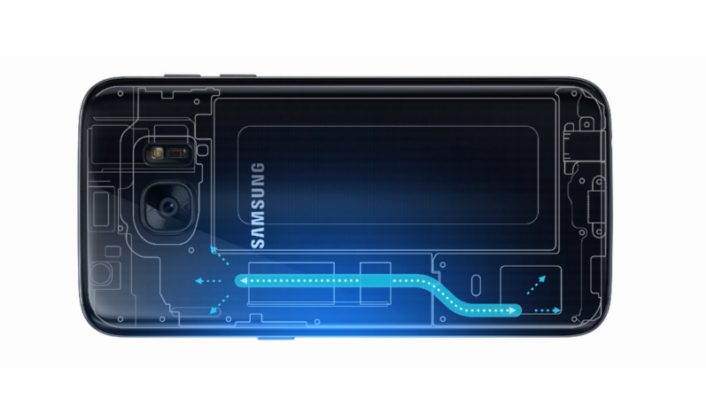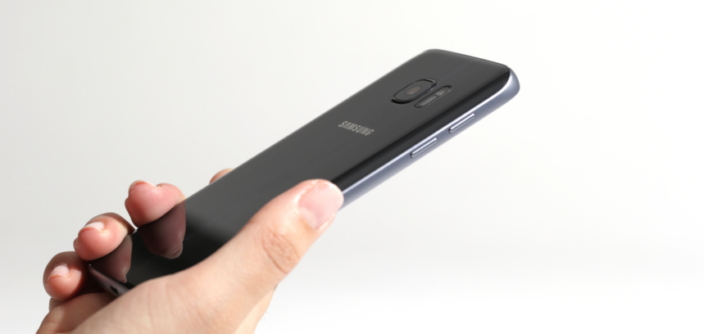[Faces of Innovation: Galaxy S7 & S7 edge] How We Created the Cooling System in the Galaxy S7 and S7 edge
on April 14, 2016
While many features of the Galaxy S7 and S7 edge are immediately draw the attention of customers, some of features are so subtle that they often go unnoticed at first. The smartphone’s cooling system is one of them. For smartphones, effective thermal radiation and control are crucial functions for the performance and lifespan. Principle Engineer Kyungha Koo and Senior Engineer Haejin Lee from the Advanced Component Technology team, Senior Engineer Jeonggyu Jo from the Advanced Product R&D team, Senior Engineer Sanghyun Yi from the Mechanical R&D team shared their stories how the cooling system of the Galaxy S7 and GalaxyS7 edge was created.
Q. How is the cooling system of the Galaxy S7 and S7 edge different from conventional technology for smartphone thermal radiation?
Kyungha Koo: Using smartphones applications such as games and videos requires the hardware to perform at high levels and therefore generate heat. When the temperature reaches a certain point, the application processor (AP) decreases clock rates to prevent excessive heat build-up. Therefore, many researches have been conducted to figure out how to effectively radiate heat from smartphone devices during use.
The most important part of the Galaxy S7 and S7 edge’s cooling system is the thermal spreader (Heat Pipe). We adopted a spreader that is only 0.4mm in diameter, making it the thinnest in the market today. Unlike the conventional thermal spread sheet technology, the thermal spreader uses changes in the phases of water to radiate heat. It has a porous structure on the inside where water absorbs heat, turns into steam and moves through pipes. After losing heat, the steam liquefies, and turns back into water in the structure. This continuous cycle dispels heat. Generally, its thermal conductivity is more than 50 times higher than that of copper. The entire process happens inside the small space that is only 0.2mm wide.

Q. Why did you embed the cooling system?
Jeonggyu Jo: The latest Galaxy S7 and S7 edge have a high performance AP and enabling extended use of these features concerned us. To disperse more heat effectively, we embedded the thermal spreader. This ensures high performance of smartphones and also lessens surface heat at the same time.
Q. Did you have to adjust the development process due to the cooling system?
Sanghyun Yi: Throughout the smartphone development process, the controlling heat remains an important focus for us. In order to introduce a new feature to smartphones, the hardware and software have always been subject to change and adjustment during development. Accordingly, the thermal radiation method always changes and is adjusted during development.
The Galaxy S7 and S7 edge were designed to optimize the cooling system from the start. This is a new approach. The related R&D divisions and departments shared a common goal to effectively maximize the use of the cooling system. After much research, we were able to launch a smartphone that minimizes excessive heat from the device which causes discomfort to users.
Q. Does this cooling system continue to work while the smartphone is in use?
Haejin Lee: The cooling system continues to work while the smartphone is in use. An easier way to think of it is that the cooling system acts like a network of roads. When there is no traffic, you can use regular roads, but if there is traffic congestion, highways are useful to spread out the traffic volume. The thermal spreader spreads out excessive heat, preventing the smartphone from overheating.
Q. How effective is the cooling system to controlling heat?
Jo: The cooling system is in fact the hardware thermal spread solution. However, due to the spatial limits of smartphones, the cooling system’s cooling capacity alone is not enough to cool the device. We need to calculate the amount of electric current and optimize the heat control algorithm to minimize occurring heat. In other words, the new thermal spreader hardware controls the heat more effectively but the software heat-control algorithm must be made compatible to ensure best performance.
The Galaxy S7 and S7 edge are the first to implement the latest cooling system, so we thoroughly evaluated whether the system would affect other circuits or the performance of other functions while cooling down the device. Additionally, since the cooling system required new technical components, we worked closely with related teams to ensure the device remained cost effective to our customers.
Q. How did you get the ideas for the cooling system and its compositions?
Koo: There were three major ways. First, we improved conventional thermal conductive materials by working closely with partners. We also applied the thermal solution to not only smartphones, but wearable devices, cameras, tablets, PCs and other products. So another way to improve the system is to execute cross-platform reference on thermal solutions applied to different devices and optimize its performance. In that process, we sometimes make an entirely new thermal solution for a certain product. Last but not least, testing out new materials is an indispensable part, so through diverse channels like our internal laboratory and external academic circles, we collected information and conducted reviews for potential use in our products.
Q. What was the most difficult aspect of developing the cooling system?
Lee: There were many technical challenges during the development phase, including the challenge of actually installing the cooling system without altering the overall slim design of the smartphone. We couldn’t find an existing thermal spread that was as thin as we wanted, so we set out to develop our own. Since this was our first time implementing a thermal spreader, we had to go through a trial process to figure out the best standards to measure the system’s effectiveness. However, in the end, we were able to successfully develop a thermal spreader and received positive feedback from consumers.
Yi: Another challenge was cutting a groove on the bracket to install the cooling system. The larger the cooling system, the larger the groove required to house it – and a large groove can compromise the strength of the device. However, we eventually, came up with a perfect place that was big enough to house the cooling system yet maintained the strength of the device. As a result, the thermal spreader in the Galaxy S7 is 30% bigger than the original design.



